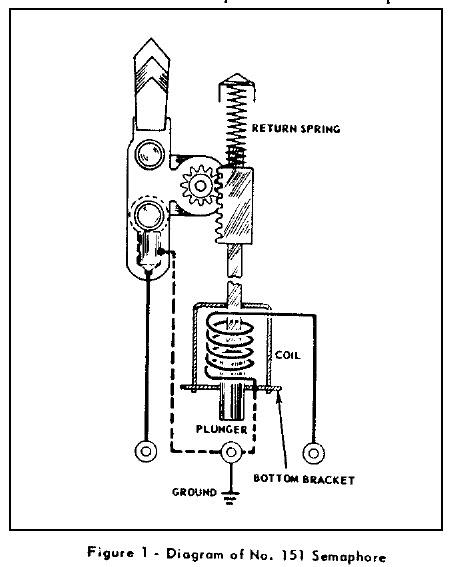Originally Posted by matt b:
I had the idea that I wanted to use semphores to signal when my track blocks were turned on.
A quick look and it appears I can wire them to the blocks to signal green when on and maybe have them fall back to red when the block is turned off, although they wouldn't light up when they should be red. Does this sound right?
I think the simple answer is if you want the signal to show Red (Stop) when there is no track power to the block, the semaphore arm would be in the down (horizontal) position which requires the semaphore coil to be energized so obviously you can’t use voltage from that track block which would be zero. If you want to show Green (Go) when the block has power the semaphore arm would be vertical with the light shining through the green lens which means the coil would not be energized.
But you don’t want to use track voltage anyway because track voltage varies with the desired speed, the type of engine and the load on it (length and weight of consist) so it may not be high enough at all times to supply sufficient power to the coil to move the arm fully down to the horizontal position.
If you’re not using DPDT relays like Dale suggested, you would need a DPDT switch with one pole having track power on the normally closed contact and the other pole having power from another source (an accessory terminal) to the semaphore coil on the normally OPEN contact. Power to the semaphore light would be constant accessory power.
And I agree with others that the #151 is not designed to be activated for long periods of time. Been there, done that and burned a few out! You’re better off using block signals.
HTH,
Bill







